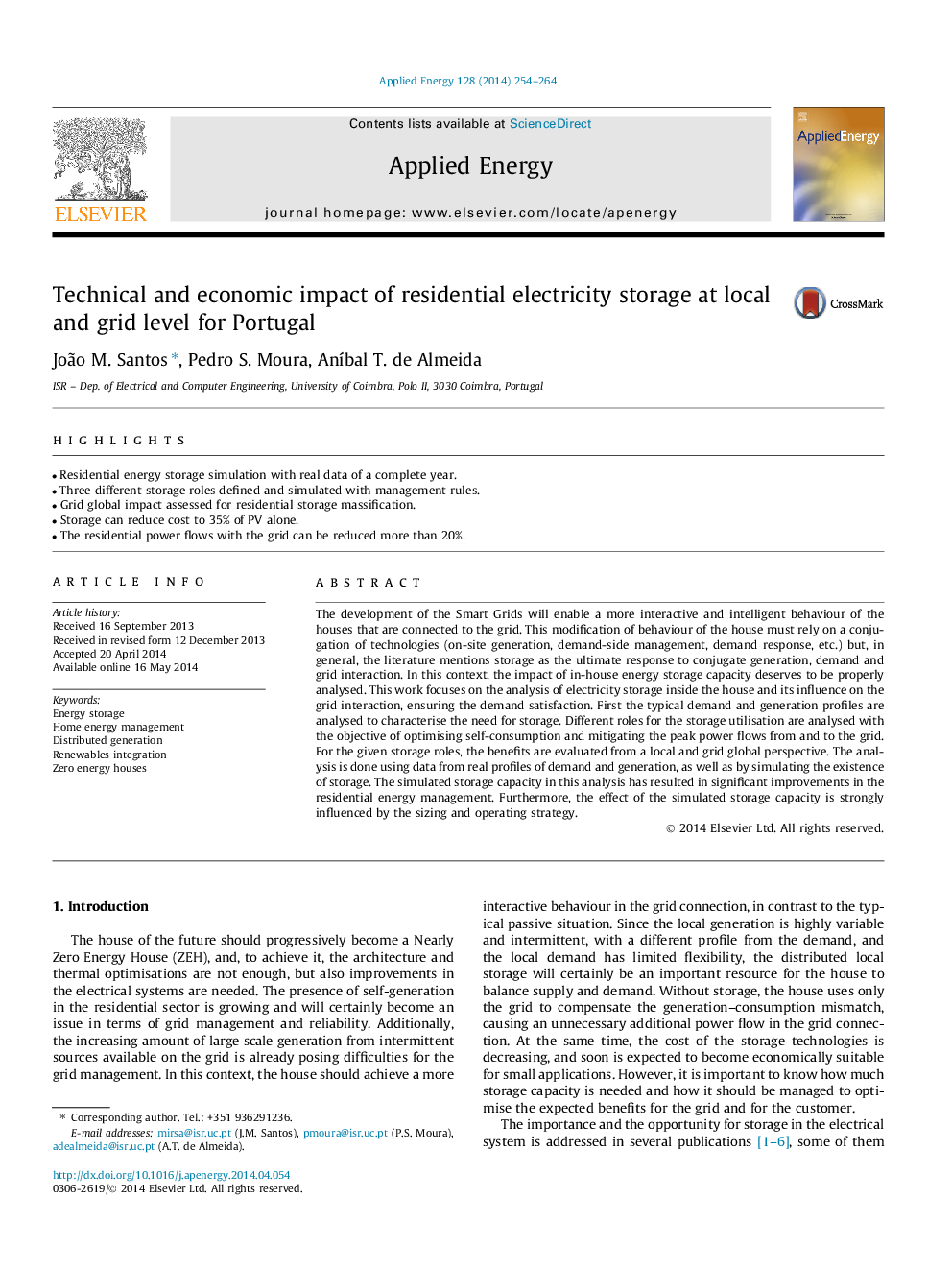| Article ID | Journal | Published Year | Pages | File Type |
|---|---|---|---|---|
| 242682 | Applied Energy | 2014 | 11 Pages |
•Residential energy storage simulation with real data of a complete year.•Three different storage roles defined and simulated with management rules.•Grid global impact assessed for residential storage massification.•Storage can reduce cost to 35% of PV alone.•The residential power flows with the grid can be reduced more than 20%.
The development of the Smart Grids will enable a more interactive and intelligent behaviour of the houses that are connected to the grid. This modification of behaviour of the house must rely on a conjugation of technologies (on-site generation, demand-side management, demand response, etc.) but, in general, the literature mentions storage as the ultimate response to conjugate generation, demand and grid interaction. In this context, the impact of in-house energy storage capacity deserves to be properly analysed. This work focuses on the analysis of electricity storage inside the house and its influence on the grid interaction, ensuring the demand satisfaction. First the typical demand and generation profiles are analysed to characterise the need for storage. Different roles for the storage utilisation are analysed with the objective of optimising self-consumption and mitigating the peak power flows from and to the grid. For the given storage roles, the benefits are evaluated from a local and grid global perspective. The analysis is done using data from real profiles of demand and generation, as well as by simulating the existence of storage. The simulated storage capacity in this analysis has resulted in significant improvements in the residential energy management. Furthermore, the effect of the simulated storage capacity is strongly influenced by the sizing and operating strategy.
